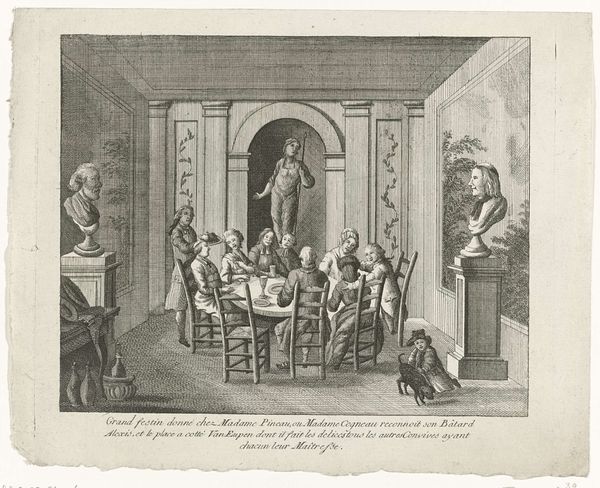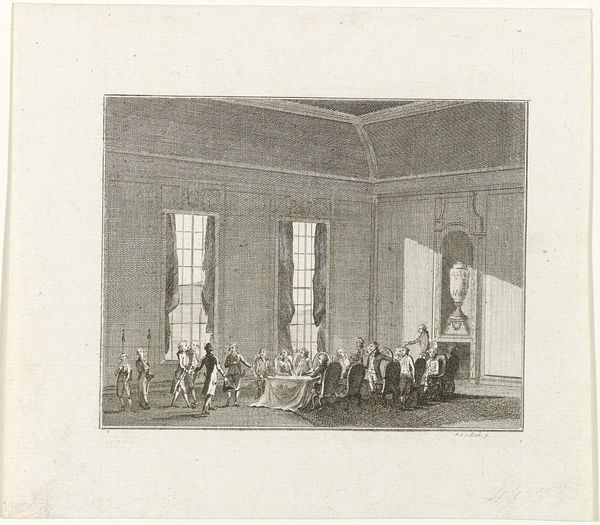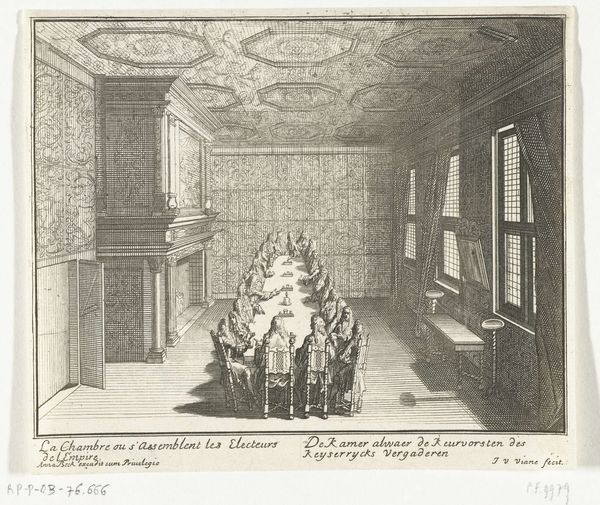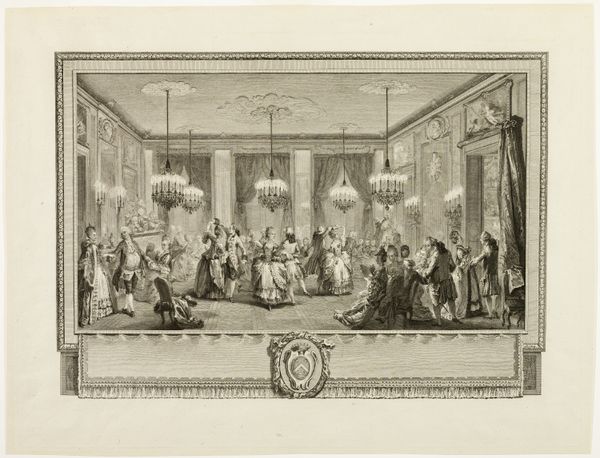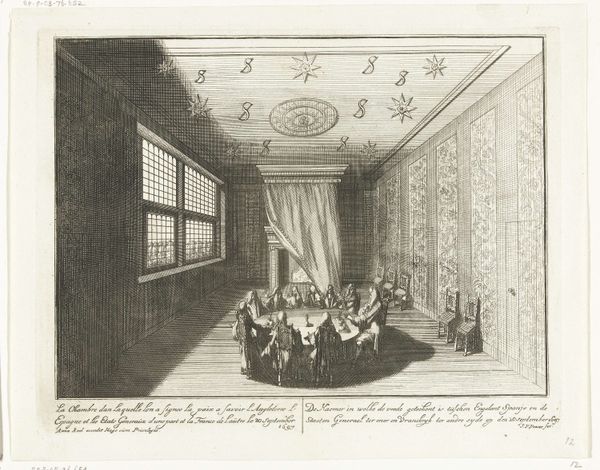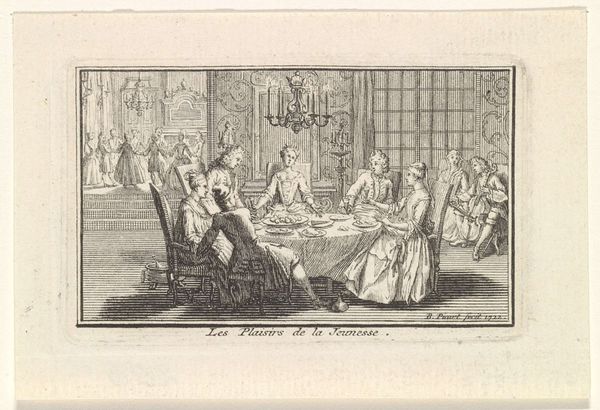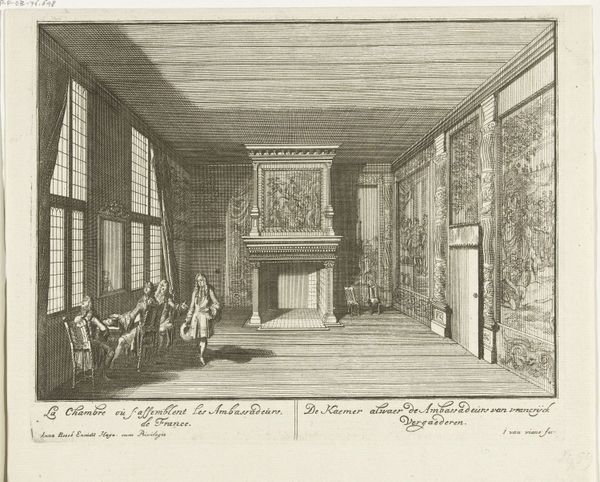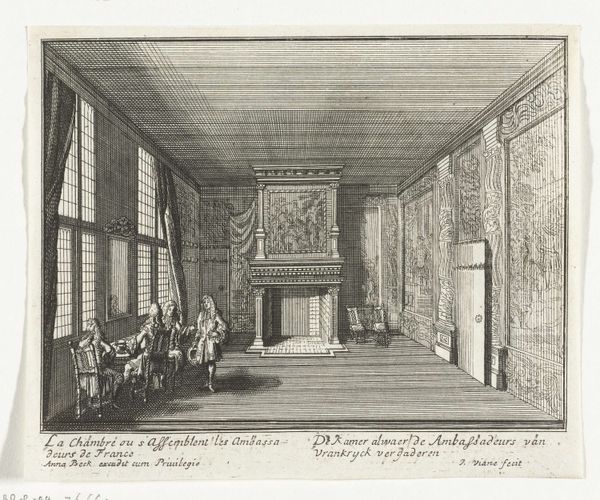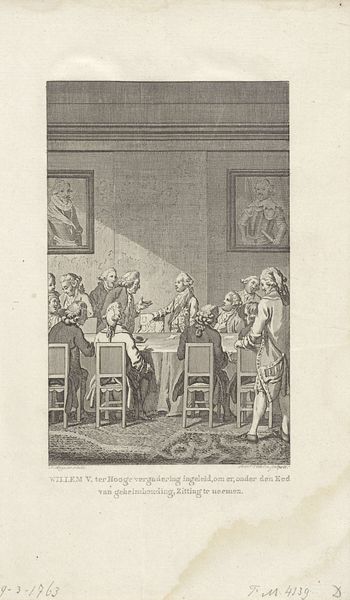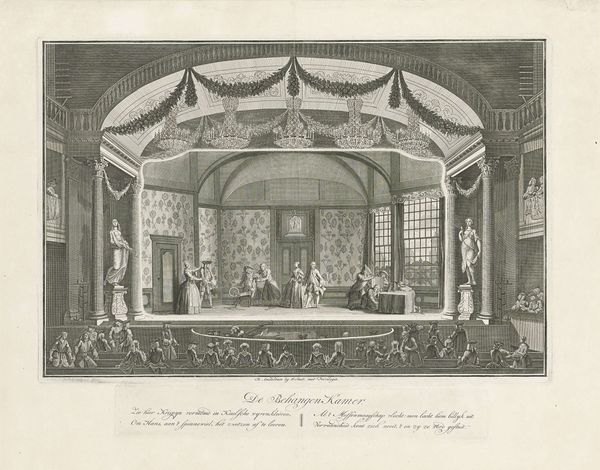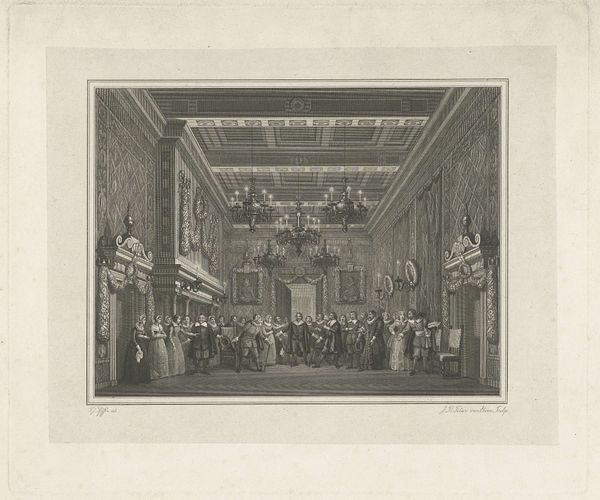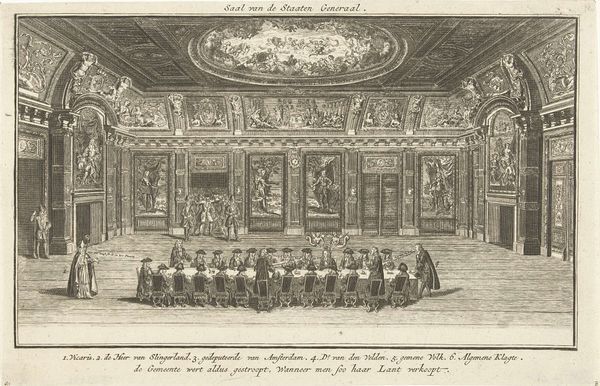
Reproductie van de prent van de kamer waar de vrede is getekend in het Huis ter Nieuburch in Rijswijk, 1697 1877 - 1879
0:00
0:00
Dimensions: height 225 mm, width 298 mm
Copyright: Rijks Museum: Open Domain
Curator: We're looking at a reproduction of an etching from 1877 to 1879, attributed to Emrik & Binger. It depicts the chamber where the Treaty of Rijswijk was signed in 1697. Editor: The perspective gives the scene an almost dollhouse-like quality, but there is also something about the tight composition that suggests the tension of diplomatic negotiation. Curator: Indeed. The event it memorializes—the signing of the Treaty—marked the end of the Nine Years' War, a significant shift in European power dynamics, particularly regarding the dominance of Louis XIV. This print is a later echo of a moment of intense negotiation, attempting to solidify peace between numerous nations. Editor: How interesting that the artist highlights the architecture rather than focusing on the individuals themselves! We can still feel that 17th-century Dutch restraint that avoids overt expression. Curator: Precisely. Note the symmetry within the scene, reflecting the era's focus on order and divine right. Also consider the visual message: rulers negotiate under highly-decorated ceilings, reflecting an architecture that mirrors order. Editor: Looking at the figures around the table, I wonder about the politics of representation here. How is power distributed, not only in terms of who is seated closest, but who is visible at all, in the etching? Curator: Those questions open fascinating avenues for understanding visual hierarchies of the time. Moreover, it provokes reflection on who later gets to document these events, influencing historical narratives. Editor: The emphasis on geometry feels decidedly Baroque, which speaks to the art styles in circulation at that time and the socio-political statements about power and control that artwork conveyed. Curator: This reproduction raises vital questions about history's transmission and the biases inherent in any representation, whether in 1697, or in this later reproduction. Editor: Considering the era and materials, it highlights that both events and artworks always get reframed depending on who is telling that story, a reflection we need to continue every day.
Comments
No comments
Be the first to comment and join the conversation on the ultimate creative platform.
